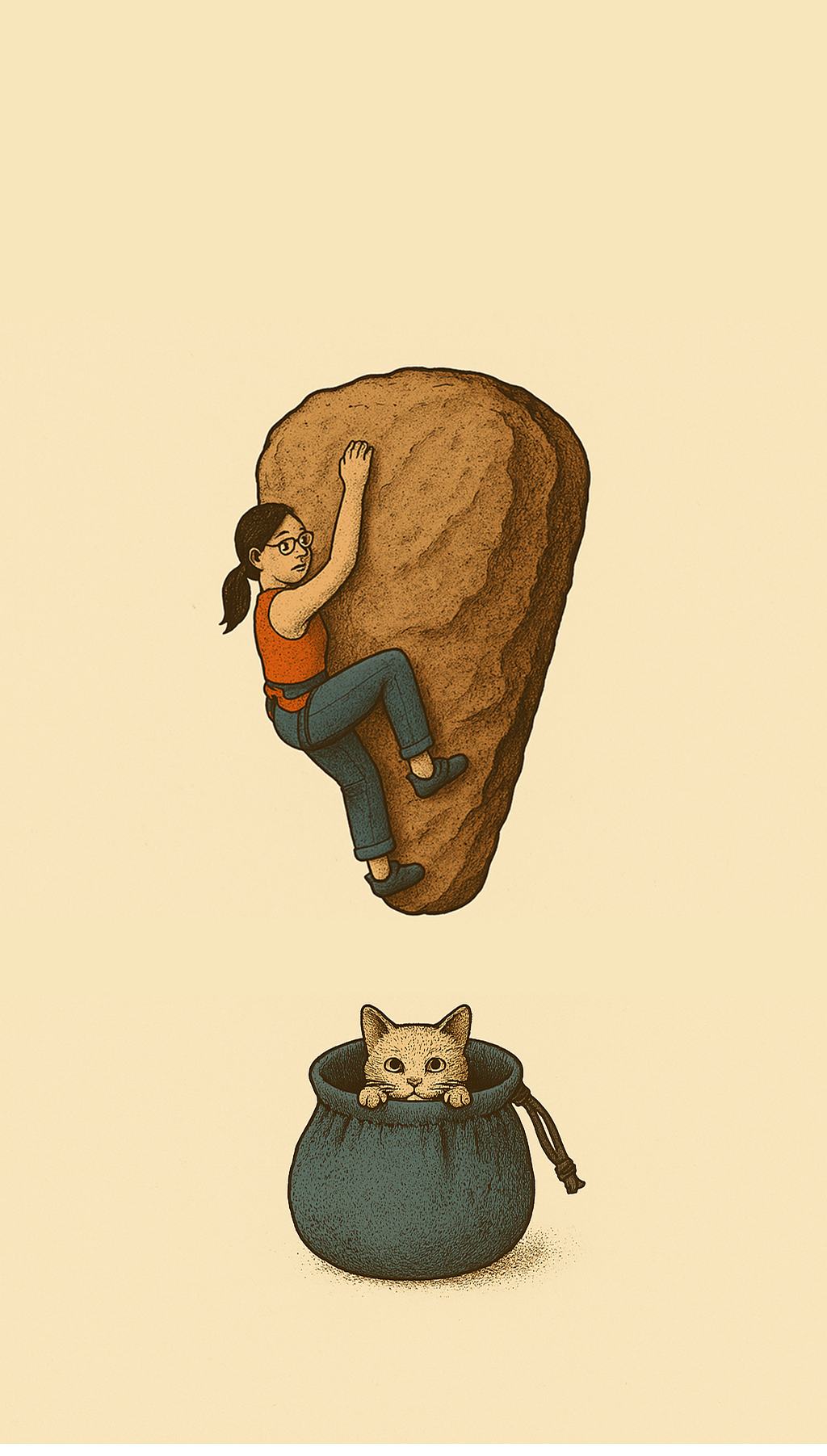The Precision Paradox: Why Forcing Accuracy Blocks it, and Noticing Unlocks it
There’s a bloody scab on my elbow—just next to the joint—that’s been slow to heal. It can’t be bandaged over or ignored; it needs air, light, and spatial protection. I’ve found myself parenting it all week. Not hiding it, but working with it—watching it trace the lines of the fridge as I move, using its location as the target of my attention.
This scab has unexpectedly become my training partner.
In the absence of pressure to perform, I began using this moment of stillness to experiment: What happens if, instead of trying to overprotect my elbow with the intention of avoidance, I just notice its relationship to the environment more precisely? Noticing—not controlling—became the source of my accuracy.
Noticing as Precision
This is the paradox: when I try to be precise, I become controlling. My nervous system stiffens, my muscles overengage, and success becomes pass/fail. But when I regress the task into noticing, I unhook performance from judgment. I begin to trust that if I attend with clarity—if I perceive with trust —then my body will adjust without force. Precision begins to emerge as a side effect of attention.
This shift changes everything. In language learning, it’s the same: when I try to speak fluently, I choke. But when I allow myself to listen closely, to notice the texture and rhythm of the words, fluency naturally arises in its own time.
Trauma-Informed Precision
For those of us with trauma histories, especially complex trauma, the demand for precision often echoes earlier experiences of conditional love, control, or punishment for failure. So the act of trying to be accurate can trigger a flood of hypervigilance. But the act of noticing—of simply tracking what’s already true in our sensory world—can be inherently regulating. It’s an internal return to safety.
When movement becomes about tracking sensation, alignment, or relationships in space—rather than executing a perfect result—we unlock both self-trust and actual neuromuscular coordination. In other words, healing and peaking become the same process.
High Performance Begins Here
This isn’t just about rehab or sensitivity training. It's performance training. By using perceptual attention rather than brute force, we train the brain to lead movement with clarity. The better we perceive, the better we can adjust. Precision, then, becomes emergent—flowing naturally from awareness instead of being squeezed out by will.
Elite movers, from dancers to climbers, don’t just try harder. They feel better—they see, hear, and orient better. Their nervous systems are attuned, not just trained. They succeed by responding, not by controlling. This kind of high-performance perception can be cultivated by anyone—but it begins with relinquishing the demand for immediate success.
The Elbow and the Fridge
So I spend a day tracing the line between my fridge and freezer with my elbow. I notice: am I above or below? Did I drift left or right? Can I see the oscillation without correcting it, and let my body adapt on its own?
This is how precision arises: not from doing the task harder, but from noticing its elements with fidelity. From holding the scab in the frame of my vision. From allowing sensation and space to teach me.
It’s how I heal.
It’s how I peak.
And it’s how I practice precision—by not chasing it.
